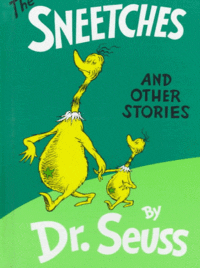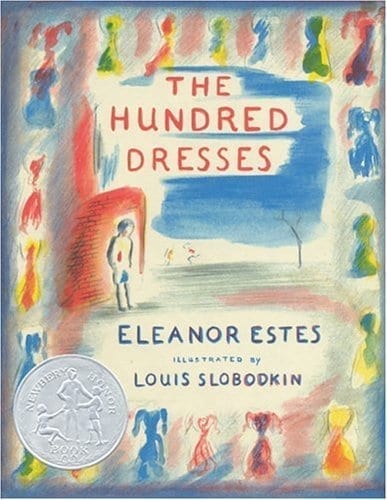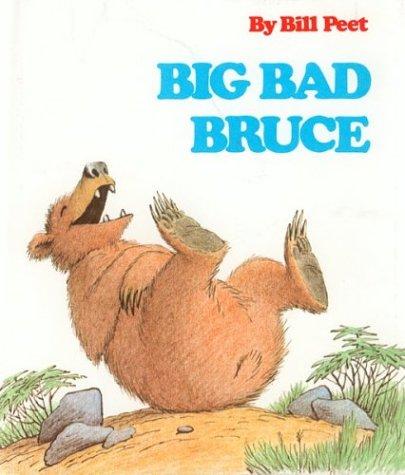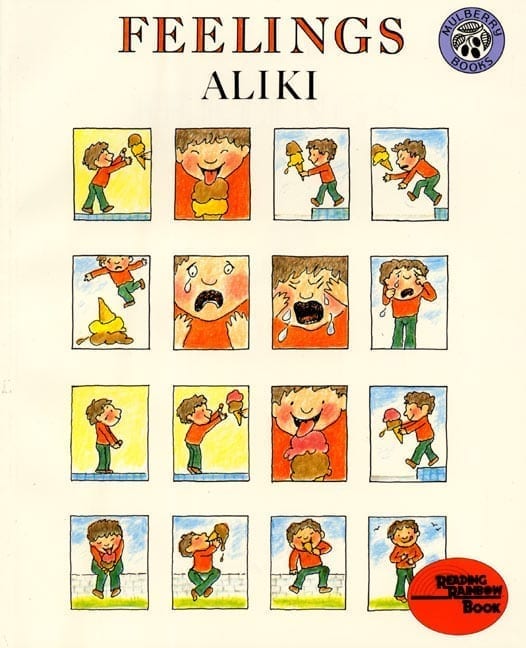“Star-Bellied Sneetches” From Sneetches and Other Stories
By Dr. Seuss
This is a story of a society of haves and have-nots in which access to the goodies of life are determined by whether or not you have a star on your belly. It could be seen as a commentary on race, gender, or any number of other social categories! The story’s strength is that it shows just how arbitrary and constructed these categories are. Features — such as a star, but also skin color, gender attributes, etc. — can be used to define people as dominant and powerful, or repressed and marginalized. What is at issue is not which characteristics are used to delineate people into specific social categories or identities, but how people marginalize others by playing up those definitions.
“The Hundred Dresses” By Eleanor Estes
Friendship, peer pressure, regret, and courage are all issues that are integral to this book. Wanda Petronski tells classmates she has a hundred dresses of all varieties in her closet at home. So why does she always wear the same old worn dress to school? The teasing that follows seems harmless, but it’s not. This book explores the hurt that comes from thoughtless words, and offers a painful but heart-warming lesson in forgiveness.
“Thidwick the Big-Hearted Moose” By Dr. Seuss
This classic Seuss story stars a happy, kind-hearted moose from the shores of Lake Winna-Bango who has the most amazing antlers and the kindest disposition. Alas! Everyone, but everyone, takes advantage of his generosity, and before long he has three-quarters of the animal kingdom nesting in the convenient perches atop his head. All Thidwick gets for his trouble is complaints and contempt. Unable to cross the lake when winter threatens, he looks all set to starve. He is saved from certain death just in time, swims the lake, and joins the herd again. This is a great book to address what being a good friend means and how false friends care only about their own needs and not about what is best for you.
“The Emperor’s New Clothes” By Hans C. Anderson
Two rascally weavers convince the emperor they are making him beautiful new clothes, visible only to those fit for their posts, but during a royal procession in which he first wears them, a child whispers that the emperor has nothing on. This is very effective in showing how true friends want what’s best for you and will be honest with you.
“Socrates” By Rascal and Gert Bogaerts
Socrates’ parents have been snatched up by the dogcatcher, leaving him an orphan alone on the streets. Abandoned, hungry, and shunned by the other street dogs, Socrates wonders if he’ll ever have a home of his very own. Even more importantly, he wonders if he’ll ever have a friend. Then one day Socrates finds a curious object, and from that moment on, everyone looks at him quite differently. Heartwarming and uplifting, this story of the universal search for friendship and acceptance also works to initiate discussions on topics such as loneliness and homelessness.
“Big Bad Bruce” By Bill Peet
Bill Peet does it again with the story of Bruce the bully bear, who enjoys tormenting the smaller animals of Forevergreen Forest. But, his rude behavior lands him in trouble when he crosses the path of Roxy the crafty yet kind old witch. She decides to teach Bruce a lesson by baking a magical pie that cuts Big Bad Bruce down to size.
“Monkey-Monkey’s Trick” By Patricia Mckissack
This is the tale of Monkey-Monkey, who wants help building a new home — but when Hyena offers to help, Monkey-Monkey suspects a trick and turns him down. So Hyena dresses up as a beautiful creature and promises to help Monkey-Monkey in exchange for a big pot of stew. When Monkey-Monkey makes the stew, Hyena returns disguised as an ugly monster and eats it all up. Then he comes back as a beautiful creature, but there is no stew, so he will not help. This happens again, until Monkey-Monkey sees through the trick, and plays a clever trick using a disguise of his own, and wins out over Hyena in the end.
“Feelings” (Also Manners and Communication) By Aliki
This book works great for teaching feelings and empathy. The short episodes, some only one frame or page, are perfect for children to analyze and describe. The illustrations are very clear, and children are able to relate to them perfectly and recognize the emotions portrayed. This book can help children recognize and explain with words how they were feeling, as well as help them relate to others and react appropriately to others in a wider variety of situations. It is a wonderful tool to reinforce cooperation and respect for others.







